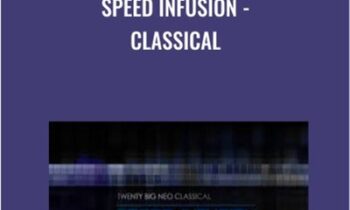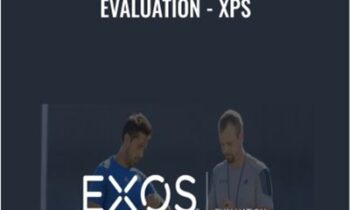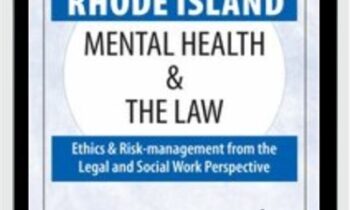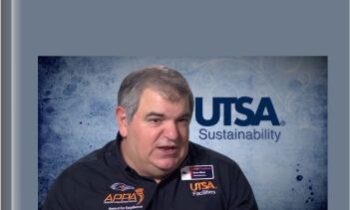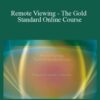$218.00 Original price was: $218.00.$32.00Current price is: $32.00.
Digital Download: You will receive a download link via your order email
Save up to 85% compared to Salepage prices. In addition, earn additional points. Save more on your next order.
Please contact email: esygbteam@gmail.com if you have any questions about this course.
 Purchase this course you will earn 32 Points worth of $3.20
Purchase this course you will earn 32 Points worth of $3.20Elevate your skills with the Stephan Schwartz – Remote Viewing – The Gold Standard Online Course course, available for just $218.00 Original price was: $218.00.$32.00Current price is: $32.00. on Utralist.com! Browse our curated selection of over 60,000 downloadable digital courses across diverse Personal Development. Benefit from expert-led, self-paced instruction and save over 80%. Start learning smarter today!
 Stephan Schwartz – Remote Viewing – The Gold Standard Online Course
Stephan Schwartz – Remote Viewing – The Gold Standard Online Course
Hi, I am Stephan Schwartz, and I would like to take a moment to talk with you about Remote Viewing and The Gold Standard Course. This is the finest course on remote viewing available, and the only one to actually be taught in colleges in the USA and Canada.
I put it together to answer the questions I got over a period of years asking me:
- How did remote viewing get started?
- How do I do remote viewing?
- What can I accomplish with remote viewing?
- What does it do to you as a person?
- What can you learn from it?
The Online Gold Standard Course includes 10 Streaming Videos, 5 Audio Recordings, and my book, Opening to the Infinite. By the time you have finished this program, you will know everything science knows about remote viewing, and you will have been carefully and gently guided through a series of experiences so that you will understand this aspect of your consciousness that is not limited by space-time. And although I can not guarantee it, it would not surprise me if you become as proficient in remote viewing as the people who worked in my Mobius laboratory. These are the men and women, much like you, who discovered sunken ships in the Caribbean and California. Who located Cleopatra’s Palace, Mark Antony’s Timonium, and the ruins of the Lighthouse of Pharos one of the Seven Wonders of the ancient world.
Using the techniques described in this course people much like you have solved crimes, and guided an investment program that tripled its money in less than a year. The 10 Videos, each about 45 minutes in length, introduce you to every aspect of remote viewing. The audio recordings, 4 of them, guide you through the experiences so that will know what it feels like to open to the part of yourself that is nonlocal. Although they can be used with no reference to Opening to the Infinite, the Albums are specifically designed to get you started doing the actual techniques described in the book. I have tried to make your experience the same as it would have been if you had come to the Mobius lab and worked on say, a project to locate an archaeological site. Through these techniques of remote viewing, you will be in contact with that part of yourself not limited by space or time. You will open yourself to an aspect of your own consciousness, that most people hardly know exists.
But what really completes the course is the book, Opening to the Infinite. I wrote this book as a manual of remote viewing. It is the complement to the videos and recordings, and is designed to be used with them, and will give you even more information and will walk you, step-by-step, through all the remote viewing protocols showing you exactly how to have these experiences. Using the same program they did you may become as proficient as the people that worked with me at the Mobius Laboratories or worked in the SRI/SAIC and Stargate programs. I am quite serious about this.
What Other Experts on Remote Viewing Have to Say
 “This important book, Opening to the Infinite, written by an experienced and thoughtful Remote Viewing researcher and teacher presents exciting experiments that have never before been published. It goes far beyond popular descriptions of psychic abilities. Based on his three decades of research, Schwartz presents comprehensive information on the most successful physical and psychological approaches discovered in the laboratory to increase accuracy and reliability of remote viewing. From concerns about time-of-day and solar activity, to helpful meditative practices, Schwartz invites us to learn to expand our awareness far beyond our ordinary understanding of space and time.”
“This important book, Opening to the Infinite, written by an experienced and thoughtful Remote Viewing researcher and teacher presents exciting experiments that have never before been published. It goes far beyond popular descriptions of psychic abilities. Based on his three decades of research, Schwartz presents comprehensive information on the most successful physical and psychological approaches discovered in the laboratory to increase accuracy and reliability of remote viewing. From concerns about time-of-day and solar activity, to helpful meditative practices, Schwartz invites us to learn to expand our awareness far beyond our ordinary understanding of space and time.”
~Russell Targ,
Co-founder of the SRI Remote Viewing program.
Author of: Limitless Mind: A Guide to Remote Viewing and Transformation of Consciousness
Now let me go through the individual 10 Video presentations:
Note: videos are available to stream online only they are not downloadable.
Video One

The first video is a presentation by Hal Puthoff who along with Russell Targ started the SRI laboratory. The one funded by the CIA and the military. Ingo Swann was one of the first viewers in their program. Many of the RV trainers offering instruction today, learned what they know about Remote Viewing from Hal, Russ, and Ingo. So why don’t you learn it too? Much of their work until recently was highly classified, and this presentation by Hal will take you inside this once-secret program. It was the SRI Lab that created the Army’s Stargate Program, and he talks about how they began, the uses that they put remote viewing to, and you see in his presentation, and in these other presentations, rarely seen examples of the real remote viewing experiences and the problems they took on.
A classic early SRI “outbound” remote viewing and target.
Video Two

The second video is a presentation by Major Paul Smith, USA (ret.) who was a Army intelligence officer with the U.S. Army Intelligence and Security Command, and the Defense Intelligence Agency. Paul was the chief coordinate theory instructor on CRV techniques in remote viewing at the Ft. Meade program. He is now the president of the International Remote Viewing Association, which Russ, Hal, Paul and myself founded with some others. Paul describes his experiences and program in the army that he took part in at Ft. Meade.
Video Three
The third video, is by myself and it talks about The Mobius Laboratory, the civilian program that ran concurrently but independently of the government program, and that carried out some of the most extraordinary experiments in remote viewing ever conducted. You will learn what we did in archeology and how we unlocked the secrets of the past; how the Mobius consensus protocol developed and how you can use yourself in practical applications remote viewing. You can do this. Here is the actual film of one of the most famous experiments in remote viewing: The challenge Mobius received from archaeologists in Egypt who did not believe in remote viewing, and who blocked our project until we passed their test: Locate a single buried building with particular characteristics in the middle hundreds of square miles of desert., an area about half the size of Los Angeles. The viewers are George McMullen and Hella Hammid. This is what happened:
Video Four

The fourth video is James Spottiswoode’s talk about the effects produced by the earth’s biosphere. He speaks in public very infrequently. Like the presentation by Hal Puthoff, this is a rare opportunity to hear the principal expert on an important aspect of remote viewing speaking on the record. It may be the only time James is on video explaining about the Local Sidereal Time effect he discovered, and the geomagnetic field effect he confirmed. He describes the powerful influence on your remote viewing these two biosphere forces exert, and how to optimize your sessions taking them into account.
Video Five
-“Skip Atwater”-
The fifth video is a presentation by Skip Atwater. Skip describes his experiences and how he came to connect remote viewing and the Hemi-sync sound sequences developed by my good friend, the late Robert Monroe. -“Skip Atwater”
Video Six
The sixth video, is physicist Russell Targ, co-founder of the SRI Program sharing insights drawn from 40 years of remote viewing research. Russell places remote viewing in a larger context. He gives you a perspective for thinking about remote viewing, its role, its place in physics, and its place in a number of spiritual paths.
This sense of context is very important. There is a tendency in remote viewing to become obsessive about a particular technique to the point where the larger context is lost. Russell grounds remote viewing in the larger world of ethnohistorical spiritual paths and modern physics.
Video Seven
-Dale Graff-
The seventh video by Dale Graff, who was the contract manager for the SRI-CIA program, presents research about remote viewing and dreams. You may not immediately associate dreaming with remote viewing but, as Dale explains it can be a very effective marriage, and he explains exactly how to achieve this.
Take a look at this experiment done by Ed May, PhD who ran the government laboratory longer than anyone, who was my research partner in carrying out one of my most famous research projects — The Deep Quest submarine experiments, which are described in Opening to the Infinite.
Video Eight
– Henry Reed–
The eighth video has two tracks. The first is by Henry Reed, a visionary psychologist who continues Dale’s theme about dreaming, showing you how to adapt the ancient dream techniques from the ancient healing temple of Aesculapius. In his presentation, Henry gives you very specific techniques for working with dreaming and remote viewing so that you can begin to utilize this part of your consciousness to get specific answers to questions that trouble you. I discuss both Henry and Dale’s technique at length in Opening to the Infinite, and walk you through how to have these kinds of dream experiences.
-Edgar Evans Cayce-
The second presentation is by Edgar Evans Cayce, the only living son of one of the greatest remote viewers in history, Edgar Cayce. Edgar Evans talks about his father’s remote viewing and I think this may be the only time he has ever spoken of Edgar Cayce’s remarkable remote viewing abilities.
Video Nine
-Ingo Swann-
The ninth video, is a presentation by Ingo Swann, Ingo is an artist in New York and one of the greatest remote viewers we have ever seen; he coined the term remote viewing, and he discusses his 40 years of work as a remote viewer and the insights he has derived from it.
Video Ten
The tenth video is myself again, and this time I deal with the implications of remote viewing, the power that remote viewing confers on individuals, and how individuals and small groups can use this aspect of the self to change history in very specific ways.
Five Experiential Audio Recordings
After the 10 streaming videos, there are 5 audio recordings that can be downloaded or streamed online. They can each be used entirely on their own. However, I recommend you first read about the audio recordings in Opening to the Infinite, where I have provided complementary material to further deepen your understanding and competence with every aspect of remote viewing. Each experience is about 45 minutes and I guide you through it. Each puts you in touch with a different way of accessing your own nonlocal awareness.

Before the Beginning
The first audio recording is Before the Beginning. It is an adaptation of laboratory visualization techniques, combined with a very specific form of intention remote viewing. This experience takes you back to the moment when you decided to be you before you were incarnate before you were in your body. You can talk to yourself at that moment, and gain insight into the purpose of your life. Why are you here. What you want your life to be about. What should you be doing.

Harmonic Healing
The second audio recording is called Harmonic Healing and it is a special technique adapted from both the remote viewing and therapeutic intention research. It takes you through an experience in which you stimulate your own immune system, bringing self-healing to your body.

Meditation for Modern Minds
The third audio recording is called Meditation for Modern Minds. Among many other benefits, meditation teaches you focus. And the success of opening to the transcendental part of yourself is strongly affected by your ability to focus. Regular practice of meditation has also been scientifically proven to change your brain chemistry, lower blood pressure, make you sleep better, feel less stressed and much more. The difficulty for most people living in today’s modern world is that traditional meditation methods were developed in an age very different to today’s fast-paced rhythm.
Remote Viewing
The fourth audio recording called Remote Viewing, explains exactly how to do remote viewings, giving you an overview of the various protocols so that they become easy and familiar to you.
The first track describes remote viewing as an experience so that you will know what to expect.
The second track describes in detail how to do a remote viewing, taking you through it step-by-step
The third track is about targets, how to select them what are good targets, what are bad targets. The fourth one describes when to do your sessions, incorporating the biosphere influences which can make so much difference.
The fifth track teaches you various the protocols that you can use, all the various techniques, both in terms of laboratory work and in terms of applied work.
The sixth is about judging and analysis so that you can derive a deep understanding of your own accuracy when you do your sessions and over time discover what things are you particularly good at, how reliable you are about certain things, how good you are at getting colors for instance, or geometric forms.
The seventh track deals exclusively with feedback, why it is important, how to give it, what to avoid, when to give it.
The eighth track deals with problems that arise in remote viewing and how to deal with them, what it is you can do to accomplish a more successful remote viewing session.
The ninth track deals with meditation. Meditation, we have learned over the years, is the strongest predictor of being successful at remote viewing. People who meditate do better than people who don’t. It’s as simple as that, and the ninth track gives you a specific meditation technique particularly adapted for remote viewing and walks you through it.
The tenth track deals with a location protocol,
The eleventh track takes you through an object protocol describing objects that are hidden from you by reason of space or time.
The twelfth track gives you the specifics of the outbound protocol. Someone hides somewhere and the viewer describes where they have hidden; it is one of the most popular ways of doing remote viewing, and was the protocol I chose for the first Associated Remote Viewing experiments. Here is the first ARV, which was used to win a horse race at Hollywood Park in Los Angeles.
This track guides you through the experience so you can know what it is like to obtain information from the future — to experience consciousness unlimited by space or time.
The thirteenth track takes you into the world of intuitive diagnosis and allows you and a partner to demonstrate to yourselves your ability to scan another person’s body and see where they have suffered illness or trauma.
Delivery Method
Cultivate continuous growth with the Stephan Schwartz – Remote Viewing – The Gold Standard Online Course course at Utralist.com! Unlock lifetime access to premium digital content, meticulously designed for both career advancement and personal enrichment.
- Lifetime Access: Enjoy limitless access to your purchased courses.
- Exceptional Value: Benefit from savings up to 80% on high-quality courses.
- Secure Transactions: Your payments are always safe and protected.
- Practical Application: Gain real-world skills applicable to your goals.
- Instant Accessibility: Begin your learning journey immediately after buying.
- Device Compatible: Access your courses seamlessly on any device.
Transform your potential with Utralist.com!
Related products
Personal Development
“Fix My Job” binaural mantra meditation for attracting work you love – Michael Davis Golzmane
= 17 Points
Personal Development
= 31 Points
Personal Development
= 45 Points
Health and Medical
= 28 Points
Personal Development
= 18 Points
Personal Development
Rhode Island Mental Health & The Law – 2020 – Robert Landau & Frederic Reamer
= 83 Points
Personal Development
= 25 Points
Personal Development
= 62 Points



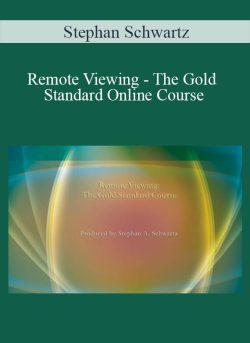
 Stephan Schwartz – Remote Viewing – The Gold Standard Online Course
Stephan Schwartz – Remote Viewing – The Gold Standard Online Course
